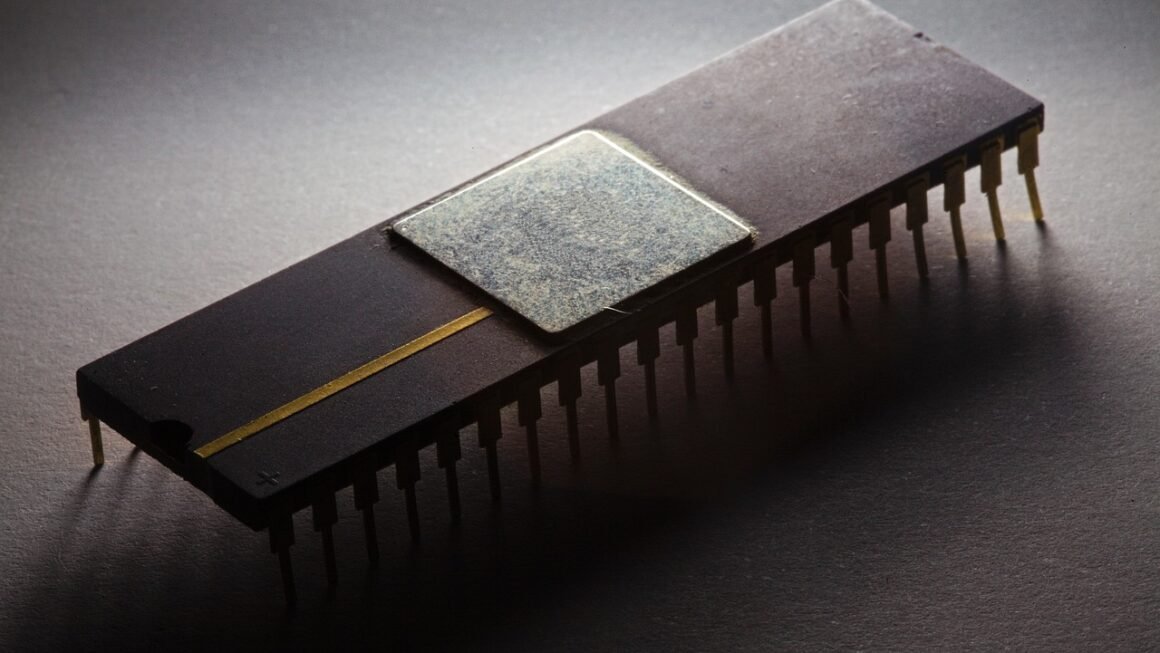Blockchain technology has rapidly transformed from a niche concept to a disruptive force across numerous industries. This revolutionary technology offers unprecedented security, transparency, and efficiency, promising to reshape the way we conduct transactions, manage data, and interact with the digital world. This comprehensive guide explores the intricacies of blockchain, its diverse applications, and its potential to revolutionize the future.
What is Blockchain?
Blockchain, at its core, is a distributed, immutable, and secure ledger that records transactions across multiple computers. Think of it as a shared, constantly updated database that is resistant to tampering. This unique structure makes it incredibly secure and transparent.
Understanding the Key Components
- Blocks: Data is grouped into blocks, each containing a set of transactions.
- Chain: Each block is linked to the previous one using a cryptographic hash, creating a chain of blocks.
- Cryptography: Cryptographic algorithms ensure the integrity and security of the data stored on the blockchain. Hashing functions are used to create unique identifiers for each block, and digital signatures verify the authenticity of transactions.
- Decentralization: The blockchain is distributed across a network of computers, making it resistant to single points of failure and censorship.
How Does Blockchain Work?
Benefits of Blockchain Technology
Blockchain offers a multitude of advantages over traditional centralized systems. Its inherent features make it suitable for a wide range of applications.
Enhanced Security
- Immutability: Once data is recorded on the blockchain, it cannot be altered or deleted. This ensures data integrity and prevents fraud.
- Cryptography: Cryptographic algorithms protect the data from unauthorized access and tampering.
- Decentralization: Distributed nature makes it highly resistant to hacking and single points of failure. If one node is compromised, the rest of the network remains secure.
Increased Transparency
- Public Ledger: All transactions recorded on the blockchain are publicly visible (though identities may be pseudonymous), allowing for greater transparency and accountability.
- Auditable History: The entire history of transactions is recorded on the blockchain, providing a clear and auditable trail.
Improved Efficiency
- Faster Transactions: Blockchain can streamline transaction processes, reducing settlement times from days to minutes or even seconds.
- Reduced Costs: By eliminating intermediaries, blockchain can lower transaction fees and operational costs.
- Automated Processes: Smart contracts can automate complex processes, reducing the need for manual intervention and paperwork.
Enhanced Traceability
- Supply Chain Management: Blockchain can track products from origin to consumer, ensuring authenticity and preventing counterfeiting. For example, a luxury brand could use a blockchain to track the origin and movement of their products, verifying their authenticity.
Real-World Applications of Blockchain
Beyond cryptocurrencies, blockchain technology is being applied in various sectors to solve real-world problems.
Finance
- Cryptocurrencies: Bitcoin, Ethereum, and other cryptocurrencies leverage blockchain for secure and decentralized transactions.
- Cross-Border Payments: Blockchain can facilitate faster and cheaper international payments by eliminating intermediaries.
- Digital Identity: Blockchain can provide a secure and verifiable digital identity for individuals and businesses.
- Example: Ripple (XRP) is a cryptocurrency and payment protocol designed for fast and low-cost international money transfers.
Supply Chain Management
- Tracking and Tracing: Blockchain can track products throughout the supply chain, from raw materials to finished goods, ensuring authenticity and preventing counterfeiting.
- Transparency and Accountability: Blockchain provides transparency and accountability in the supply chain, allowing consumers to trace the origin and journey of products.
- Example: Walmart uses blockchain to track the origin and movement of its produce, improving food safety and reducing waste.
Healthcare
- Secure Medical Records: Blockchain can securely store and share medical records, ensuring patient privacy and data integrity.
- Drug Supply Chain: Blockchain can track drugs throughout the supply chain, preventing counterfeiting and ensuring patient safety.
- Example: Medicalchain is a platform that uses blockchain to securely store and share medical records between patients and healthcare providers.
Other Industries
- Voting Systems: Secure and transparent voting systems to prevent fraud and ensure fair elections.
- Real Estate: Streamlined property transactions and ownership verification.
- Intellectual Property: Protecting and managing digital assets and intellectual property rights.
Types of Blockchains
Different types of blockchains cater to specific needs and use cases. Understanding these variations is crucial for selecting the appropriate blockchain for a given application.
Public Blockchains
- Open and Permissionless: Anyone can join the network and participate in the validation process.
- Transparency: All transactions are publicly visible.
- Examples: Bitcoin, Ethereum.
Private Blockchains
- Permissioned: Access and participation are restricted to authorized users.
- Greater Control: Offers more control over data and governance.
- Examples: Hyperledger Fabric, Corda. Typically used for enterprise solutions where privacy and control are paramount.
Consortium Blockchains
- Semi-Private: Controlled by a group of organizations.
- Shared Governance: Offers a balance between decentralization and control.
- Examples: TradeLens, a blockchain platform for global trade, is governed by a consortium of shipping companies, ports, and customs authorities.
Hybrid Blockchains
- Combines elements of public and private blockchains.
- Offers flexibility and control over data and access.
Challenges and Future of Blockchain
While blockchain offers numerous benefits, it also faces challenges that need to be addressed for widespread adoption.
Scalability
- Transaction Throughput: Some blockchains have limited transaction throughput, hindering their ability to handle large volumes of transactions.
- Solutions: Layer-2 scaling solutions, such as Lightning Network and sidechains, are being developed to improve scalability.
Regulatory Uncertainty
- Lack of Clear Regulations: The regulatory landscape for blockchain and cryptocurrencies is still evolving, creating uncertainty for businesses and investors.
- Compliance Challenges: Compliance with existing regulations can be complex and costly.
Security Risks
- Smart Contract Vulnerabilities: Smart contracts can be vulnerable to security exploits, leading to financial losses.
- 51% Attacks: Public blockchains are vulnerable to 51% attacks, where a single entity gains control of the majority of the network’s computing power.
Future Trends
- Increased Adoption: Blockchain adoption is expected to continue to grow across various industries.
- Interoperability: The development of interoperable blockchain networks will enable seamless communication and data exchange between different blockchains.
- Decentralized Finance (DeFi): DeFi is a rapidly growing sector that aims to create a decentralized financial system using blockchain technology.
- Central Bank Digital Currencies (CBDCs): Central banks are exploring the possibility of issuing digital currencies using blockchain or similar technologies.
Conclusion
Blockchain technology is more than just cryptocurrencies; it’s a foundational technology with the potential to transform numerous industries. While challenges remain, the benefits of enhanced security, transparency, and efficiency make blockchain a powerful tool for innovation. As the technology matures and regulatory clarity emerges, we can expect to see even more widespread adoption and innovative applications of blockchain in the years to come. Staying informed and understanding its potential is crucial for businesses and individuals alike in navigating this evolving digital landscape.



